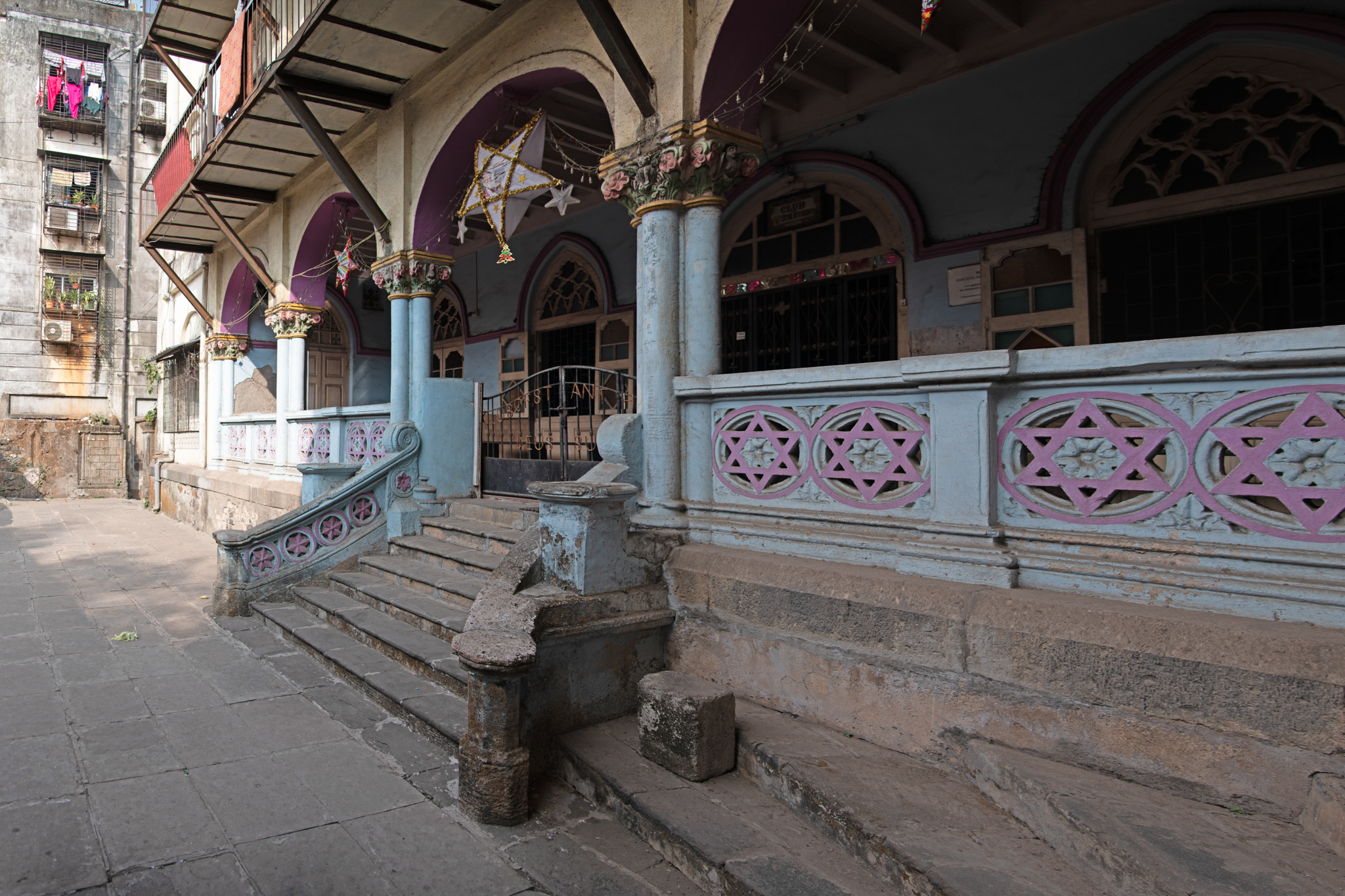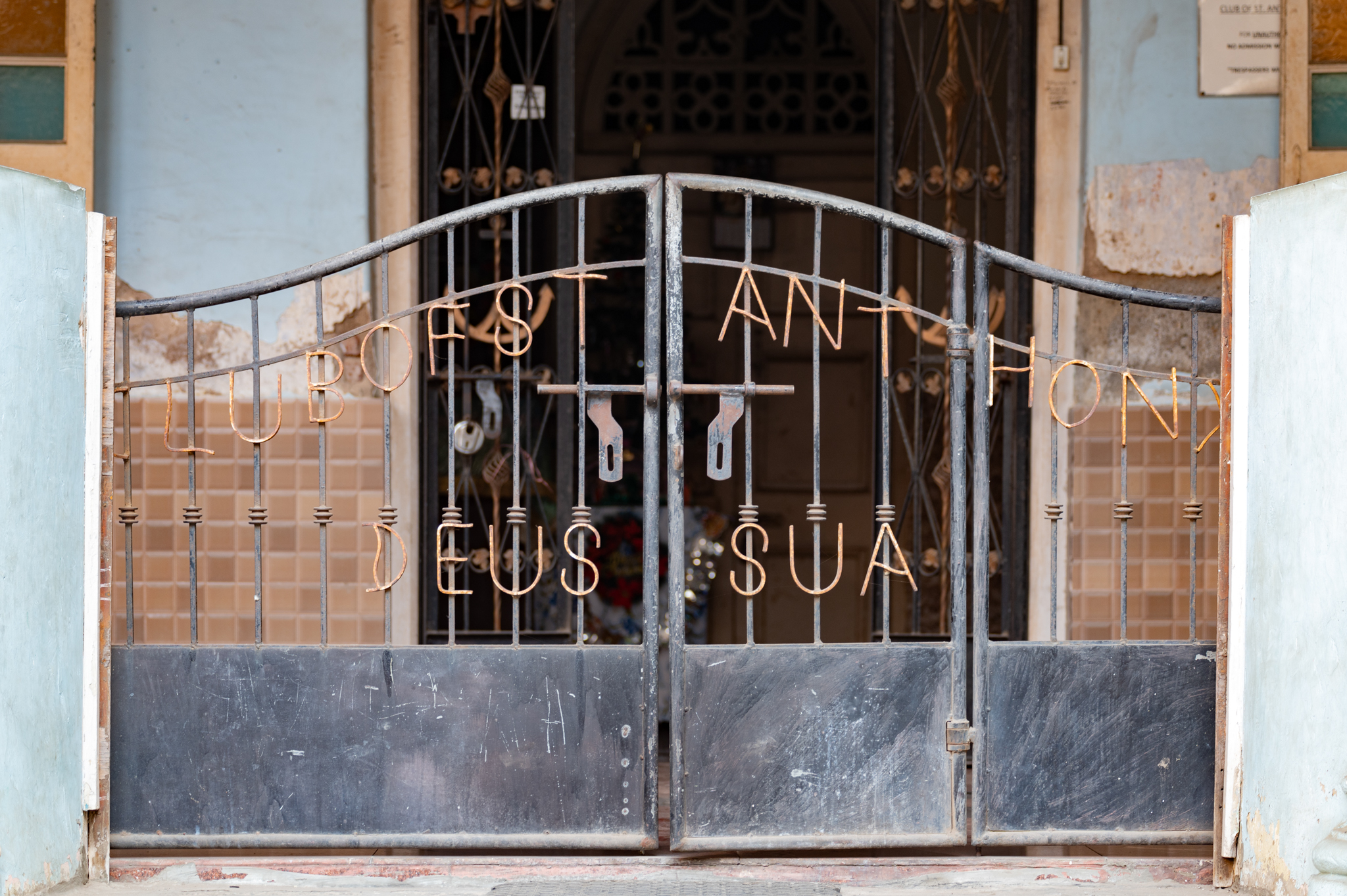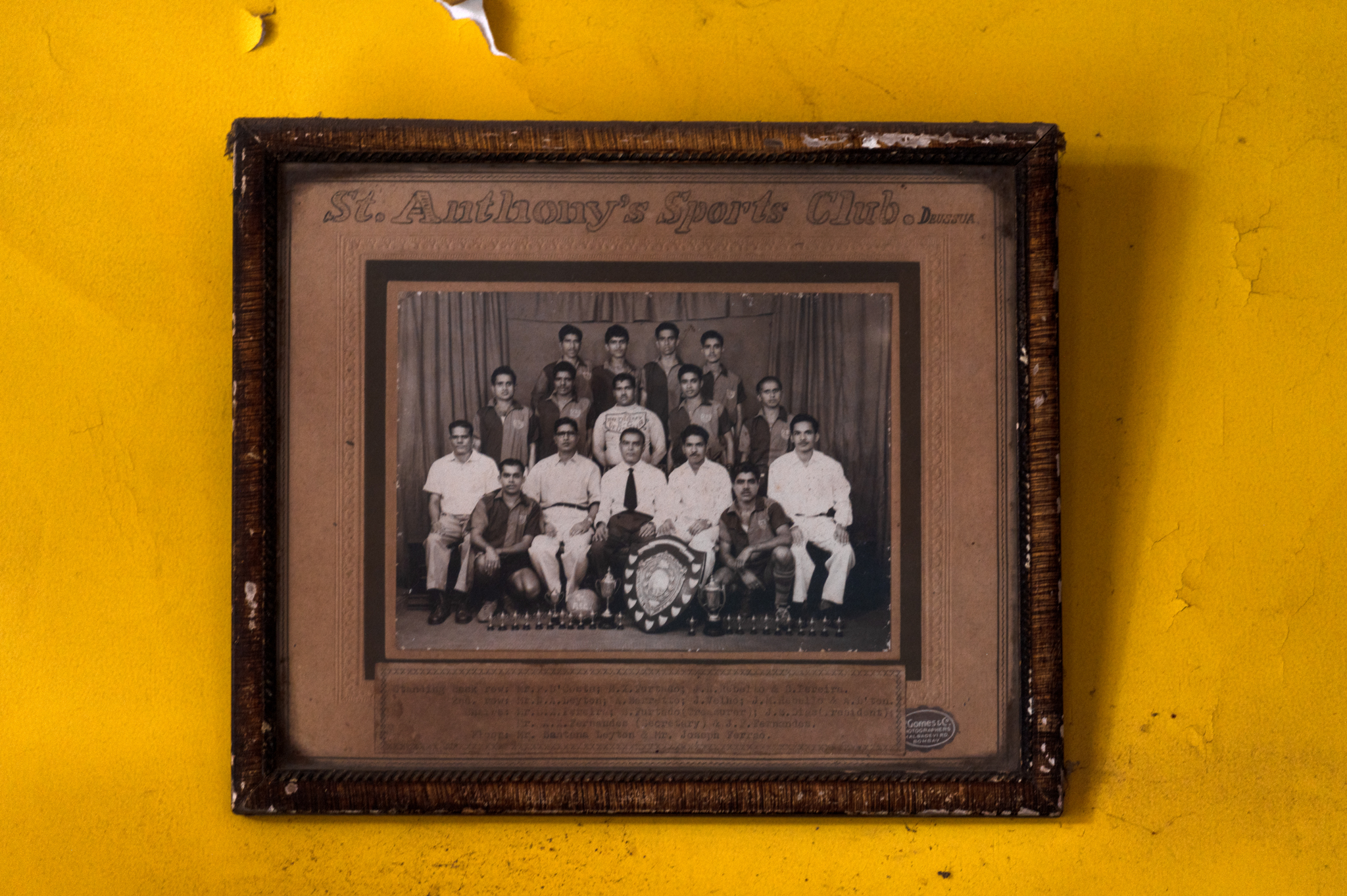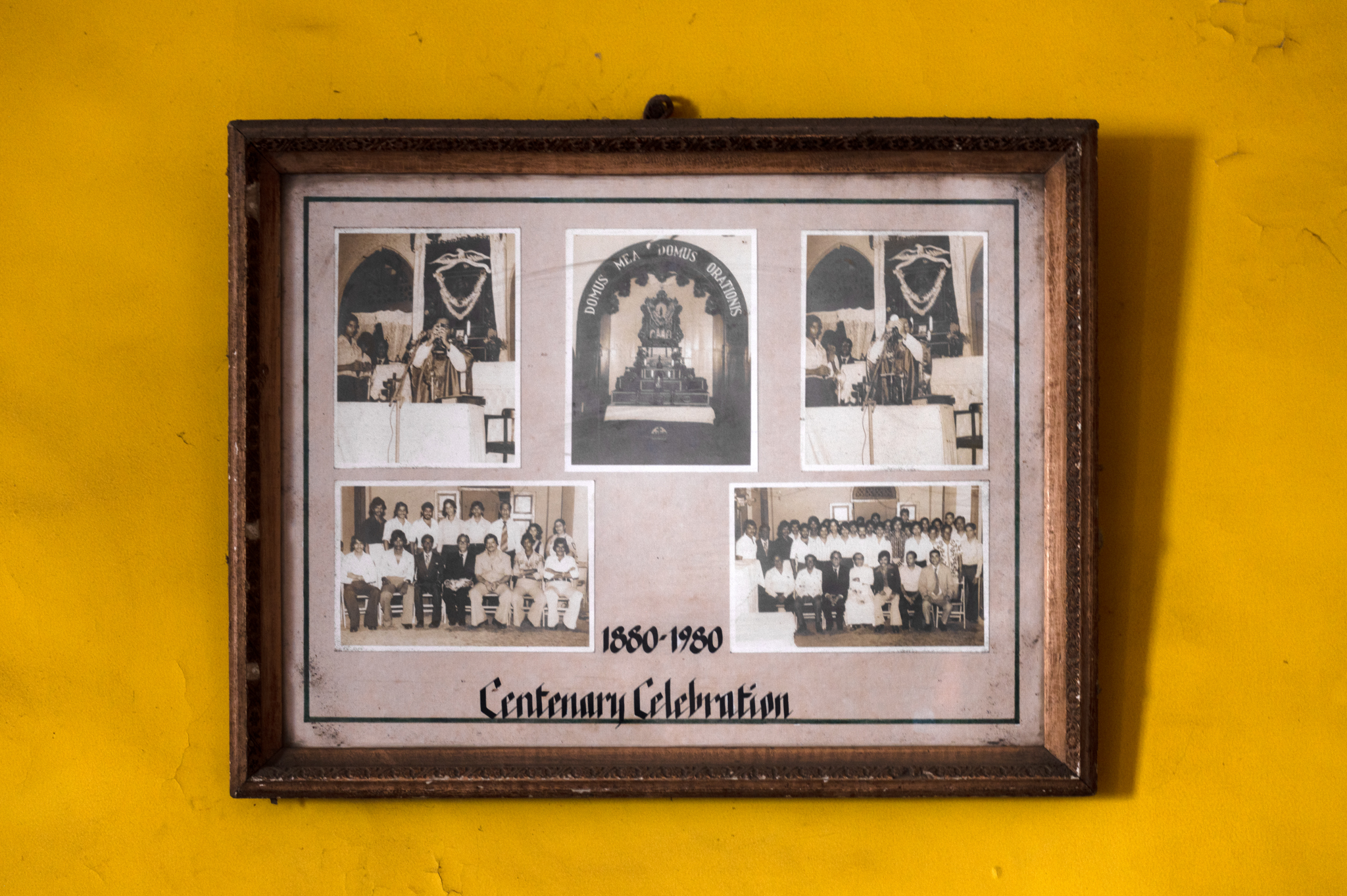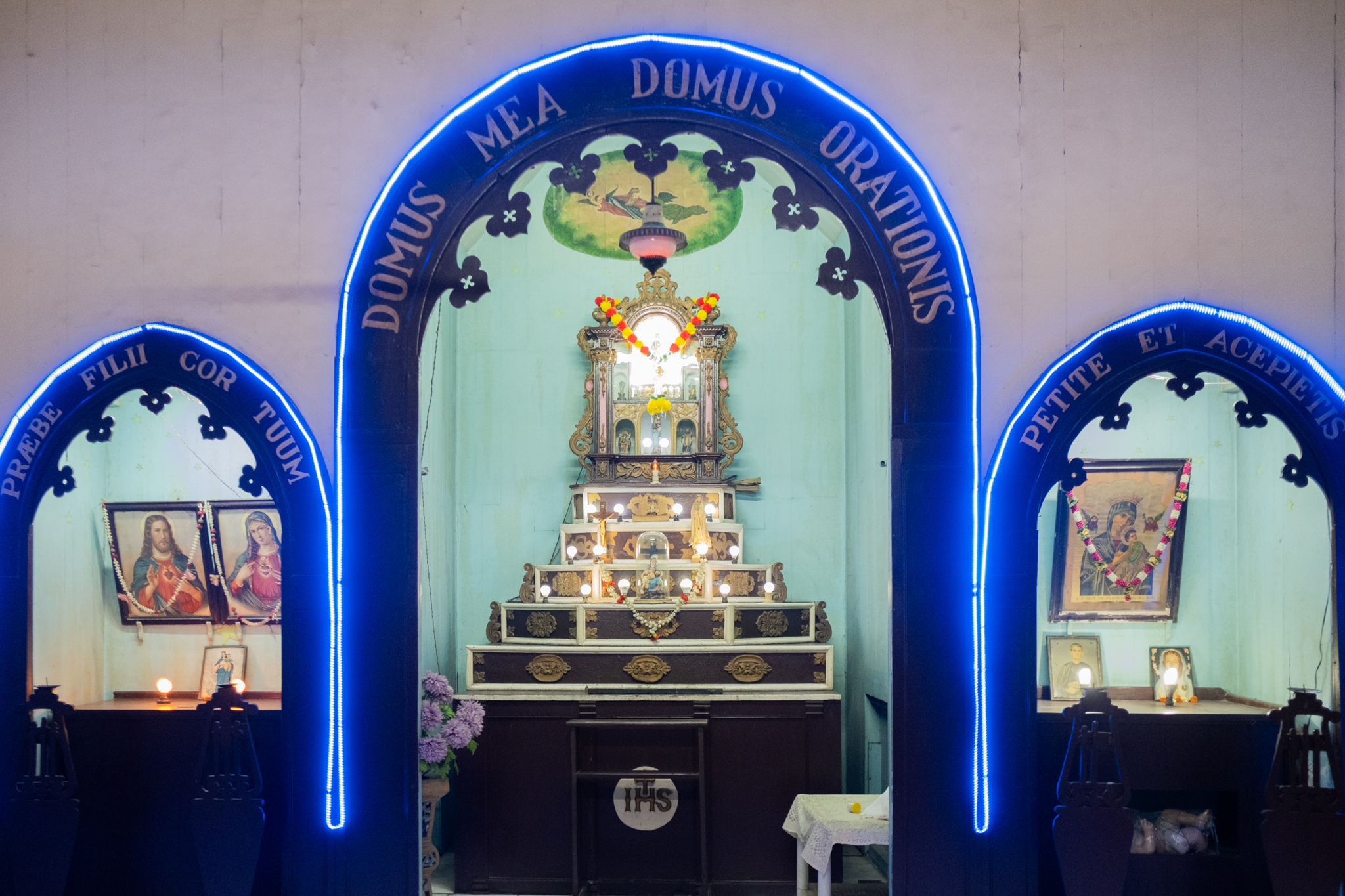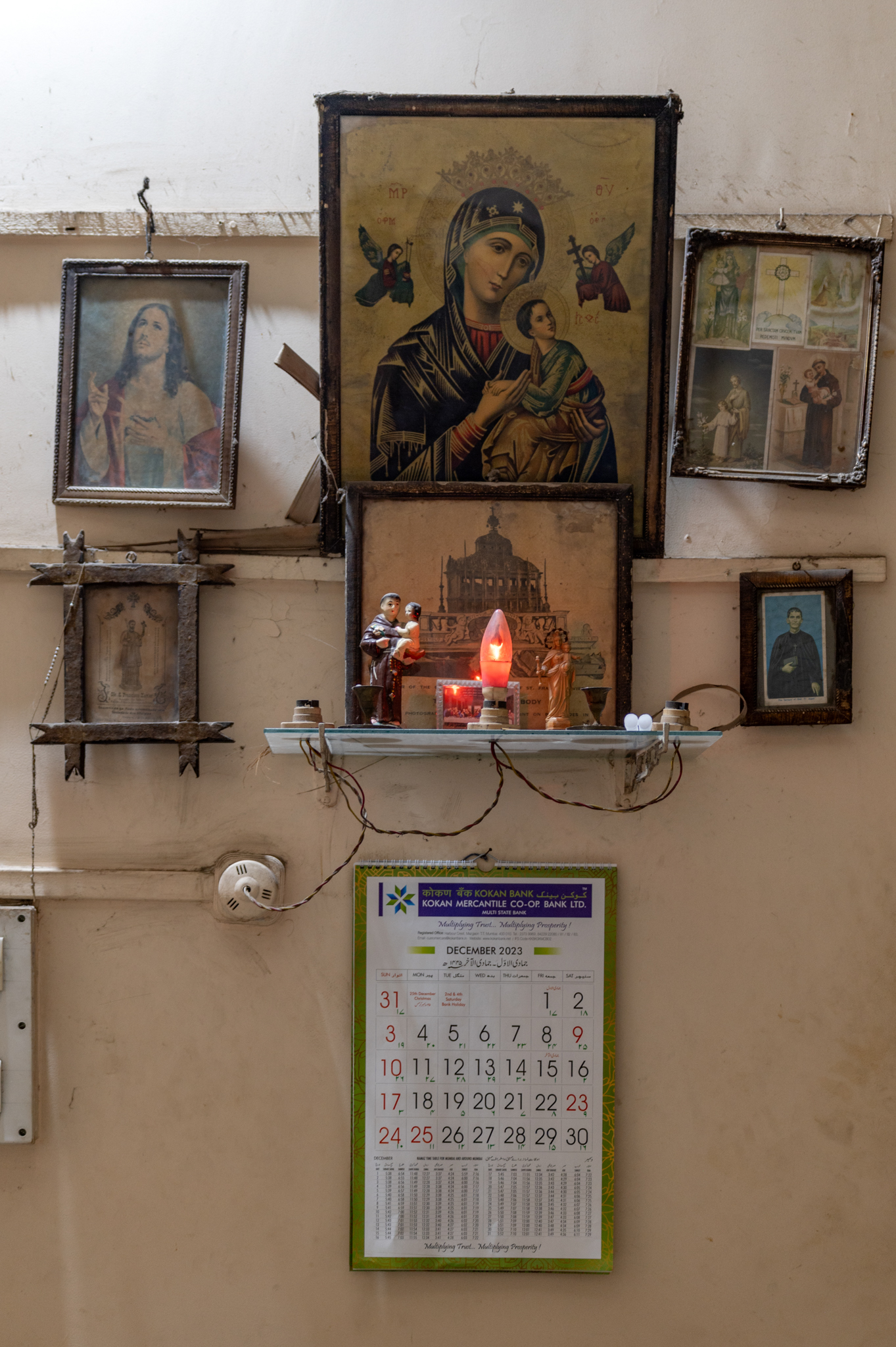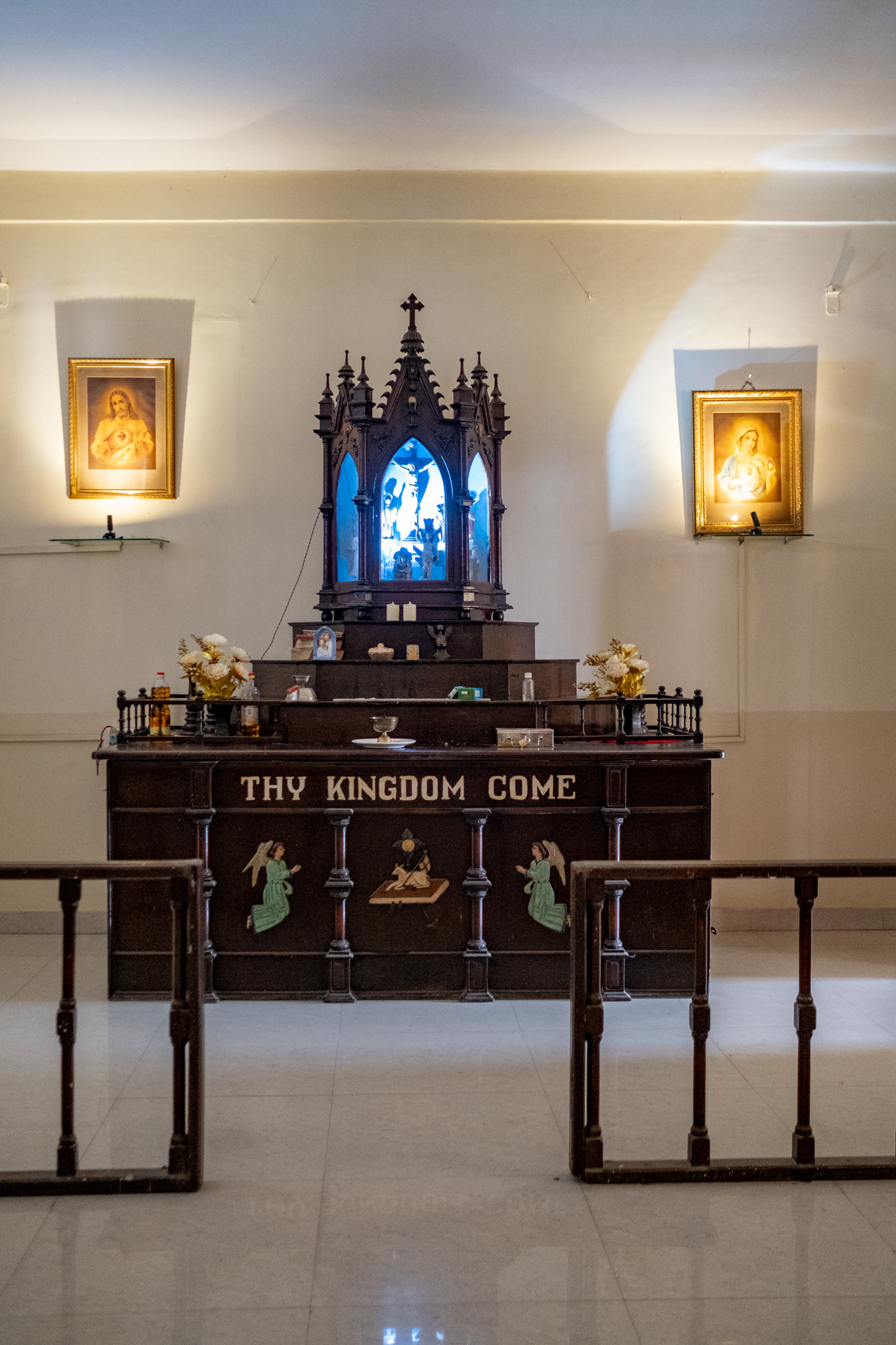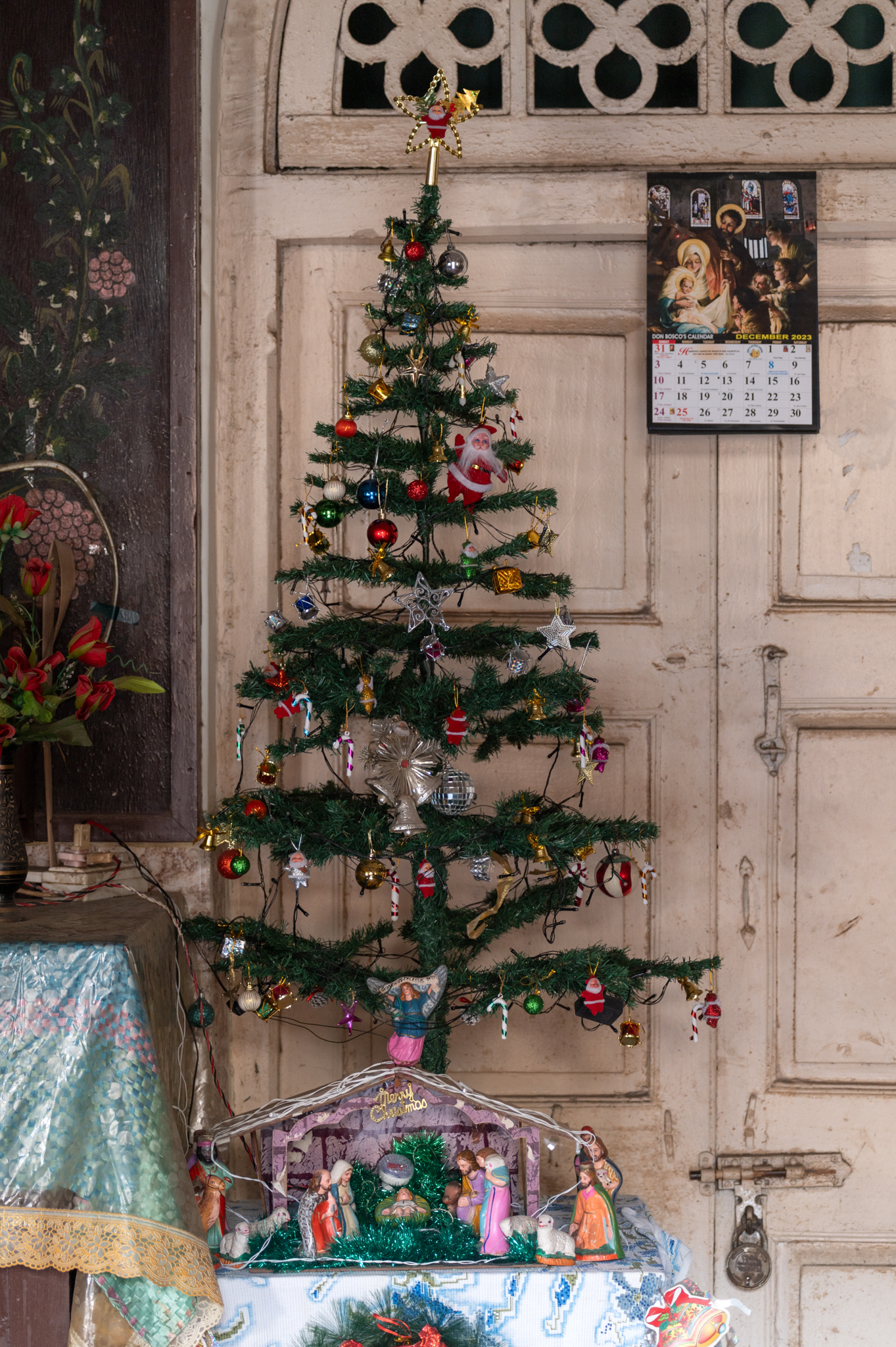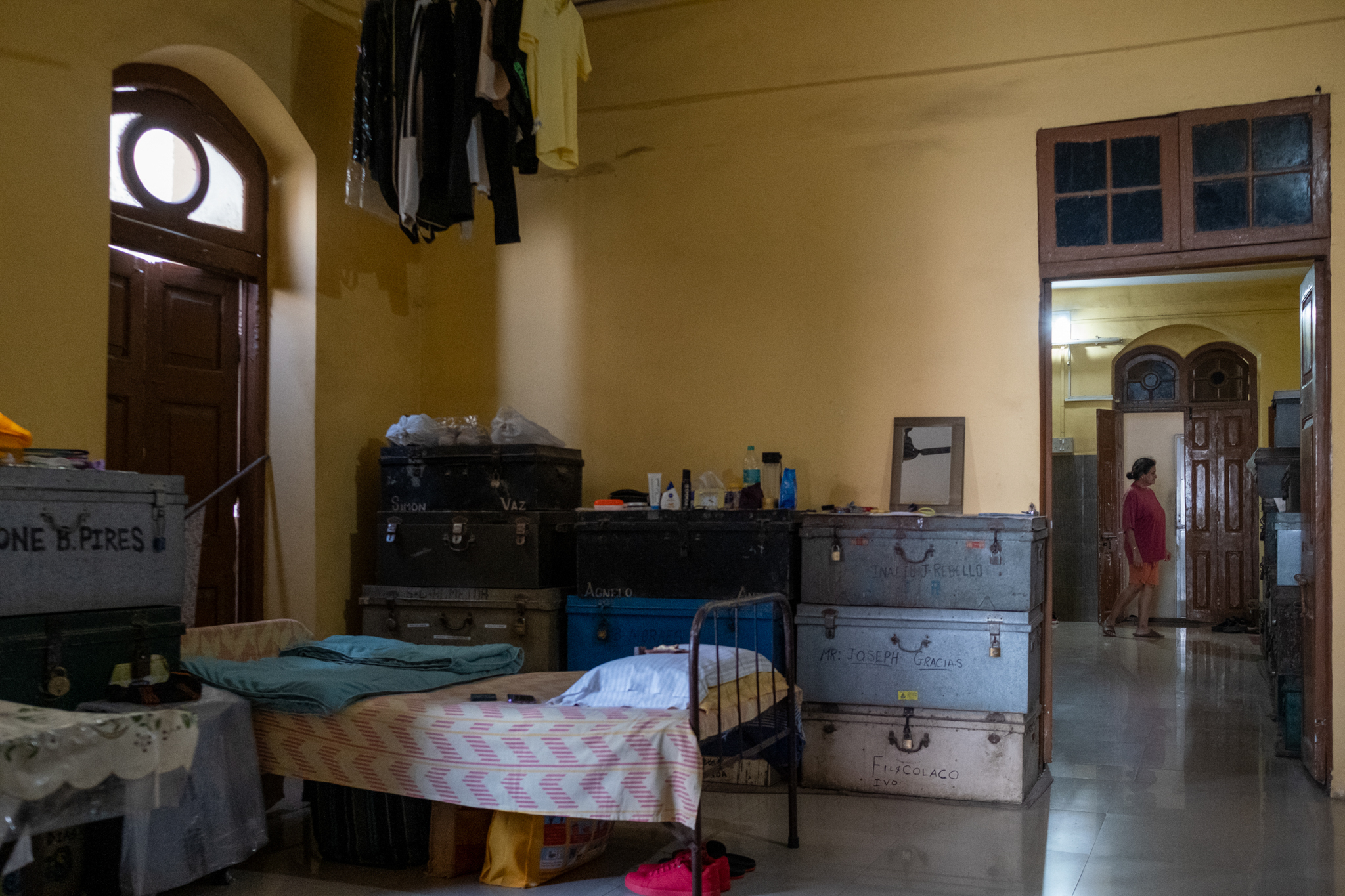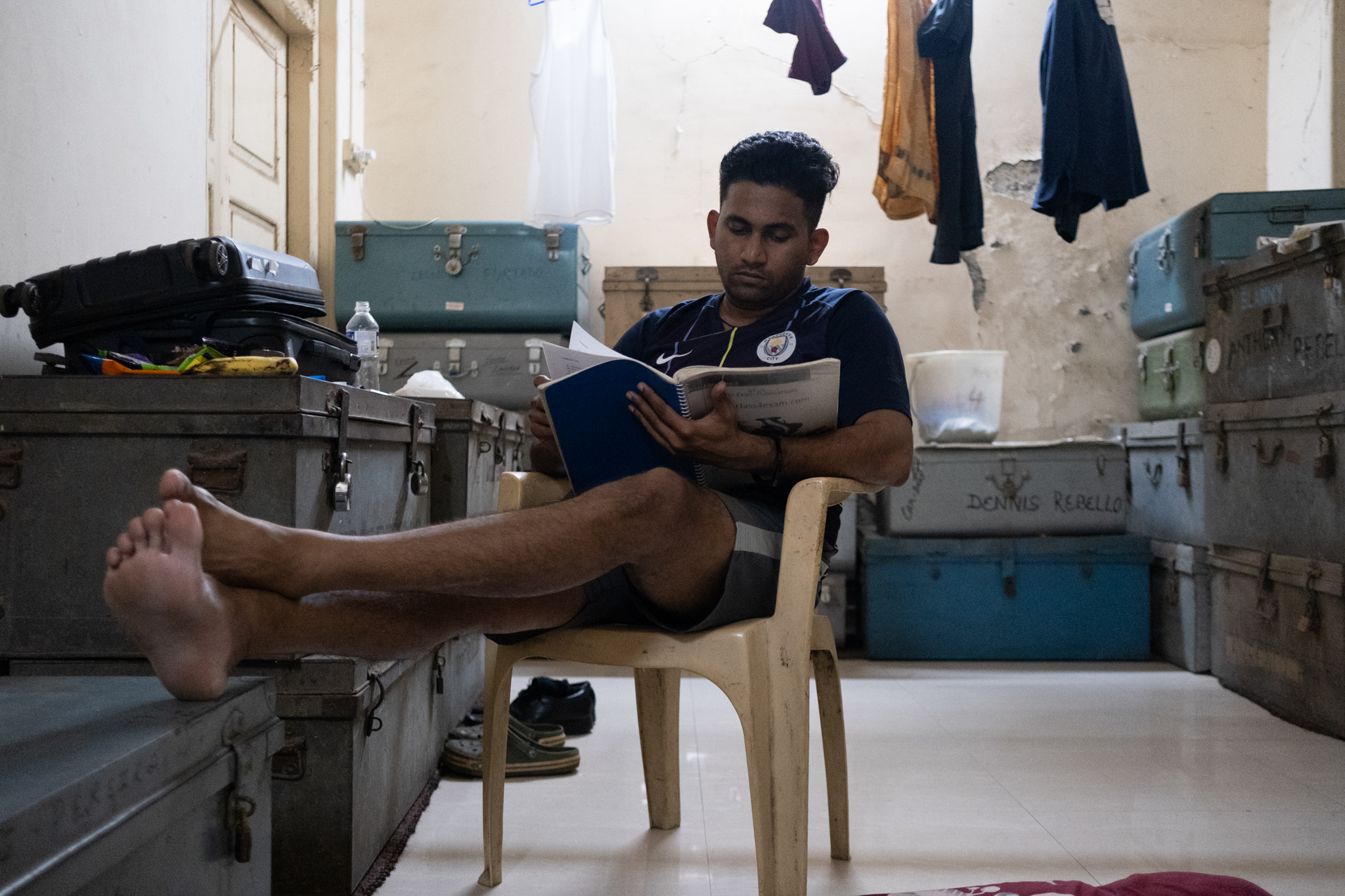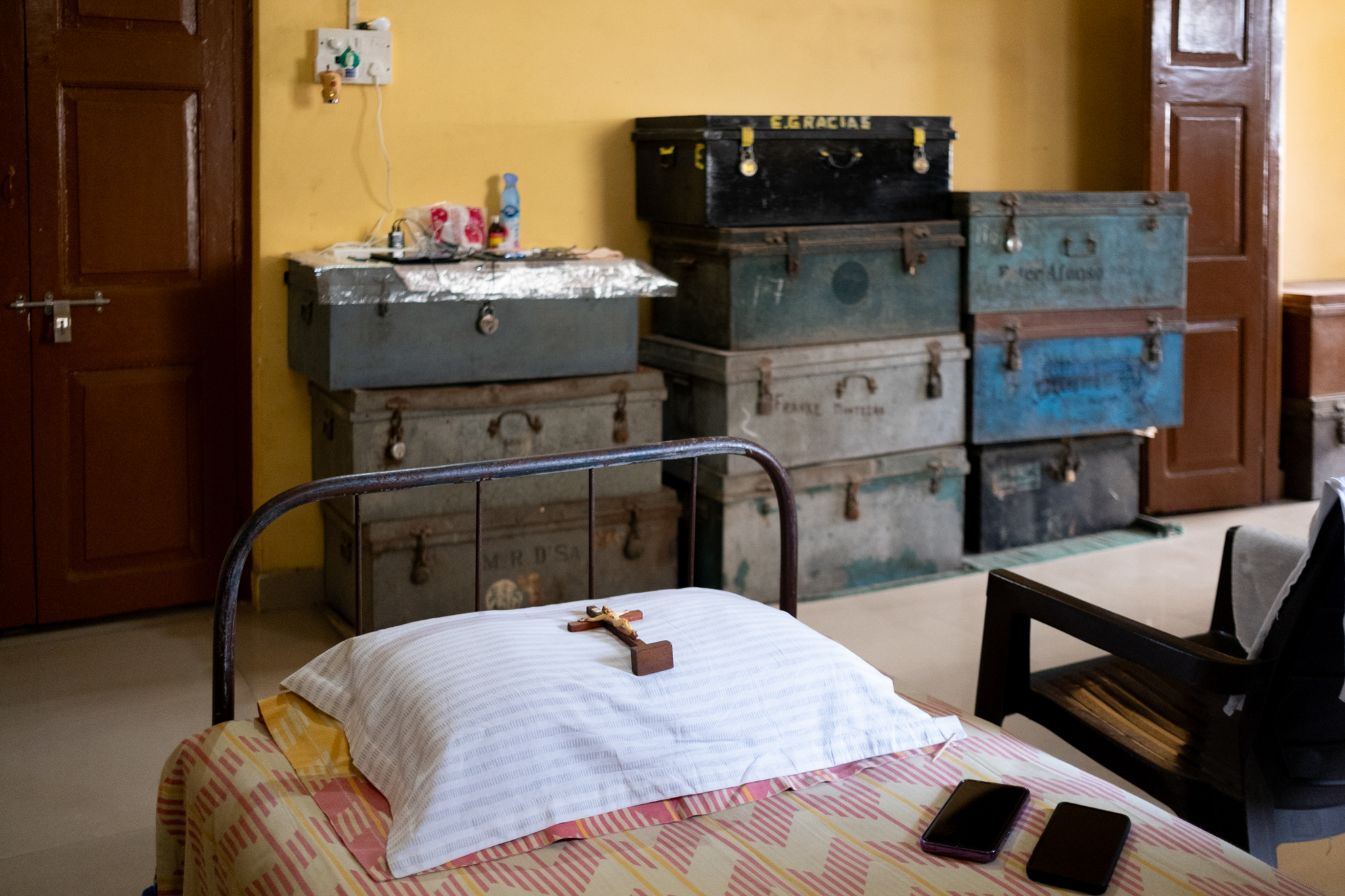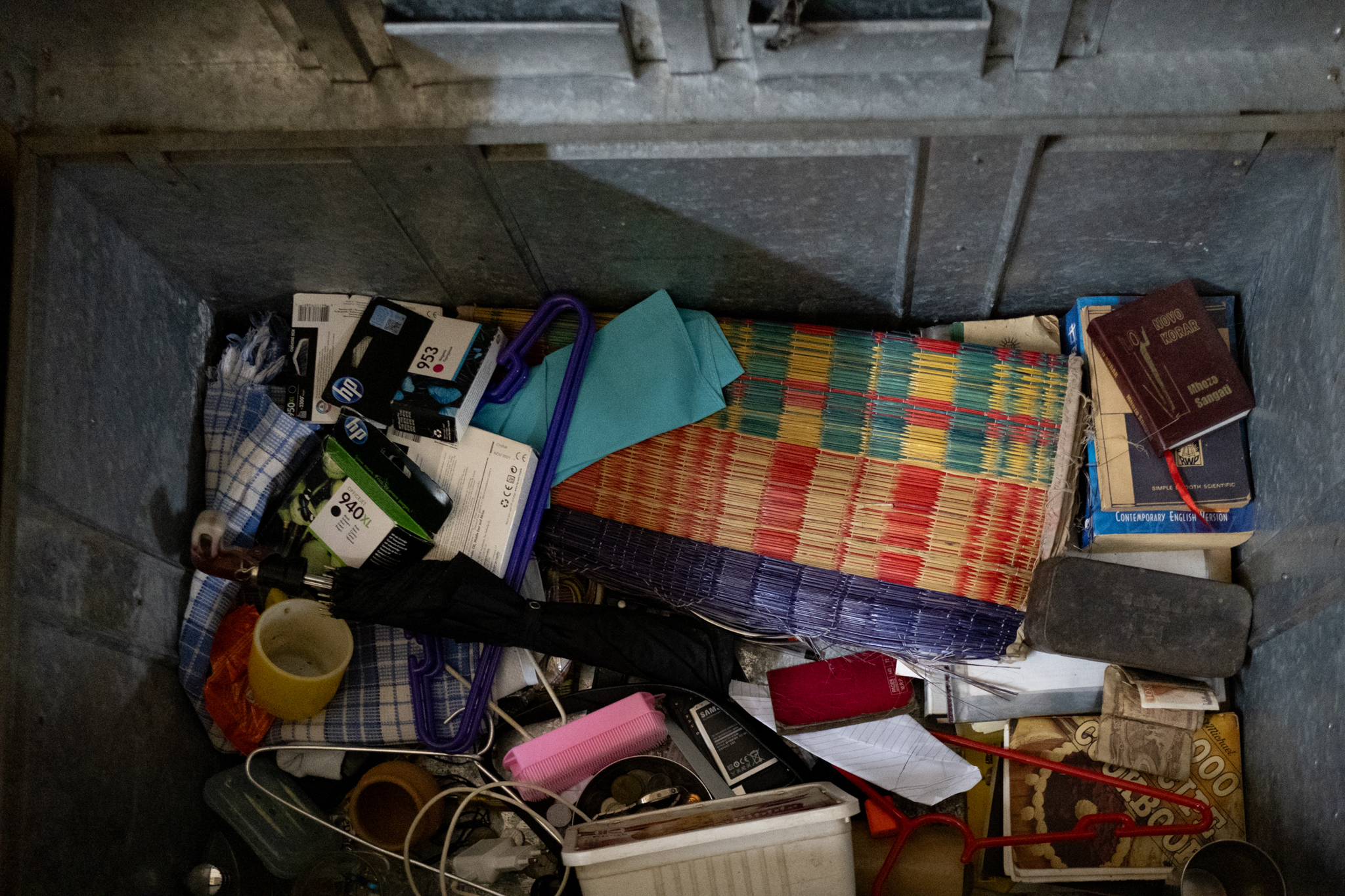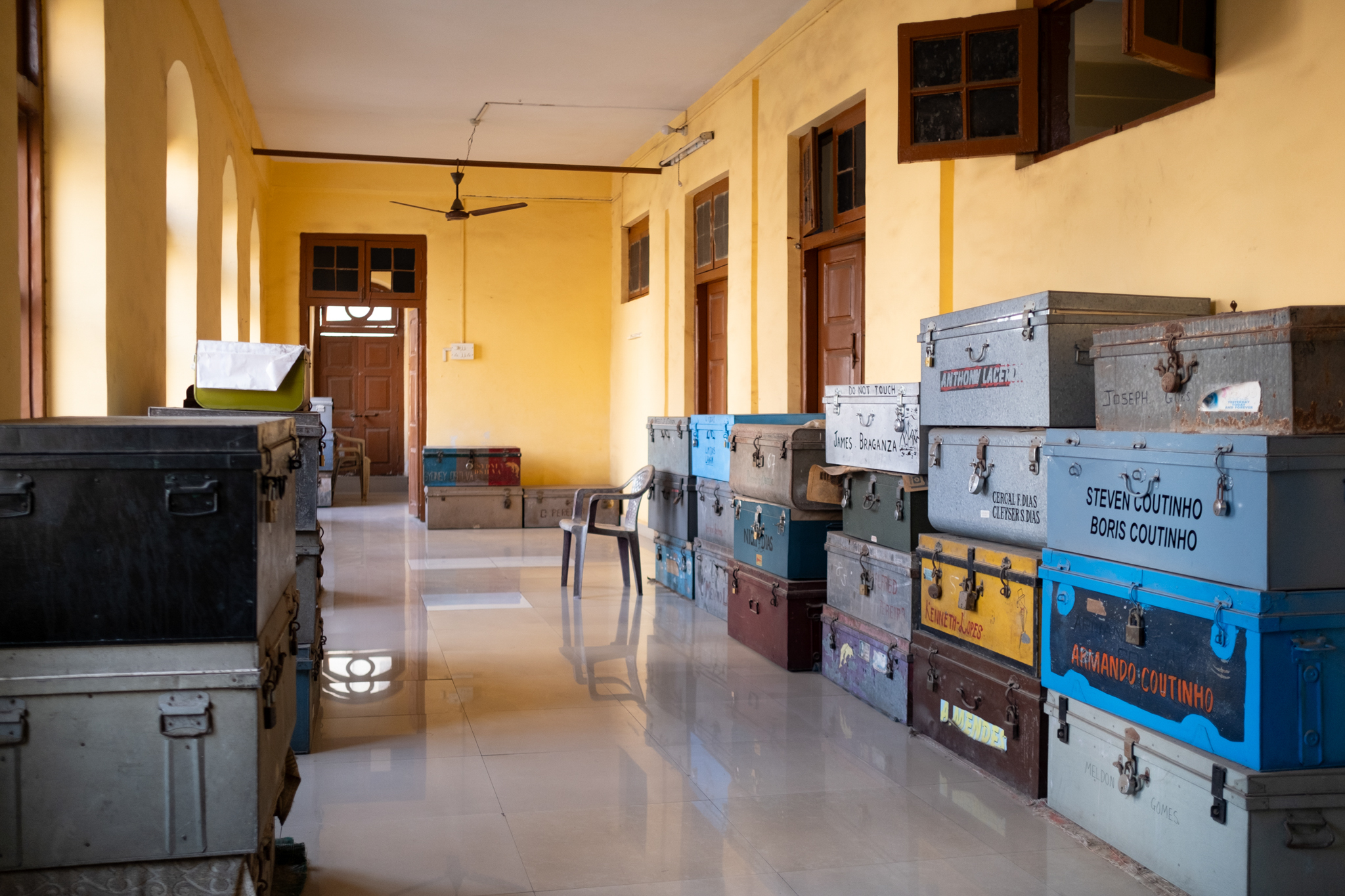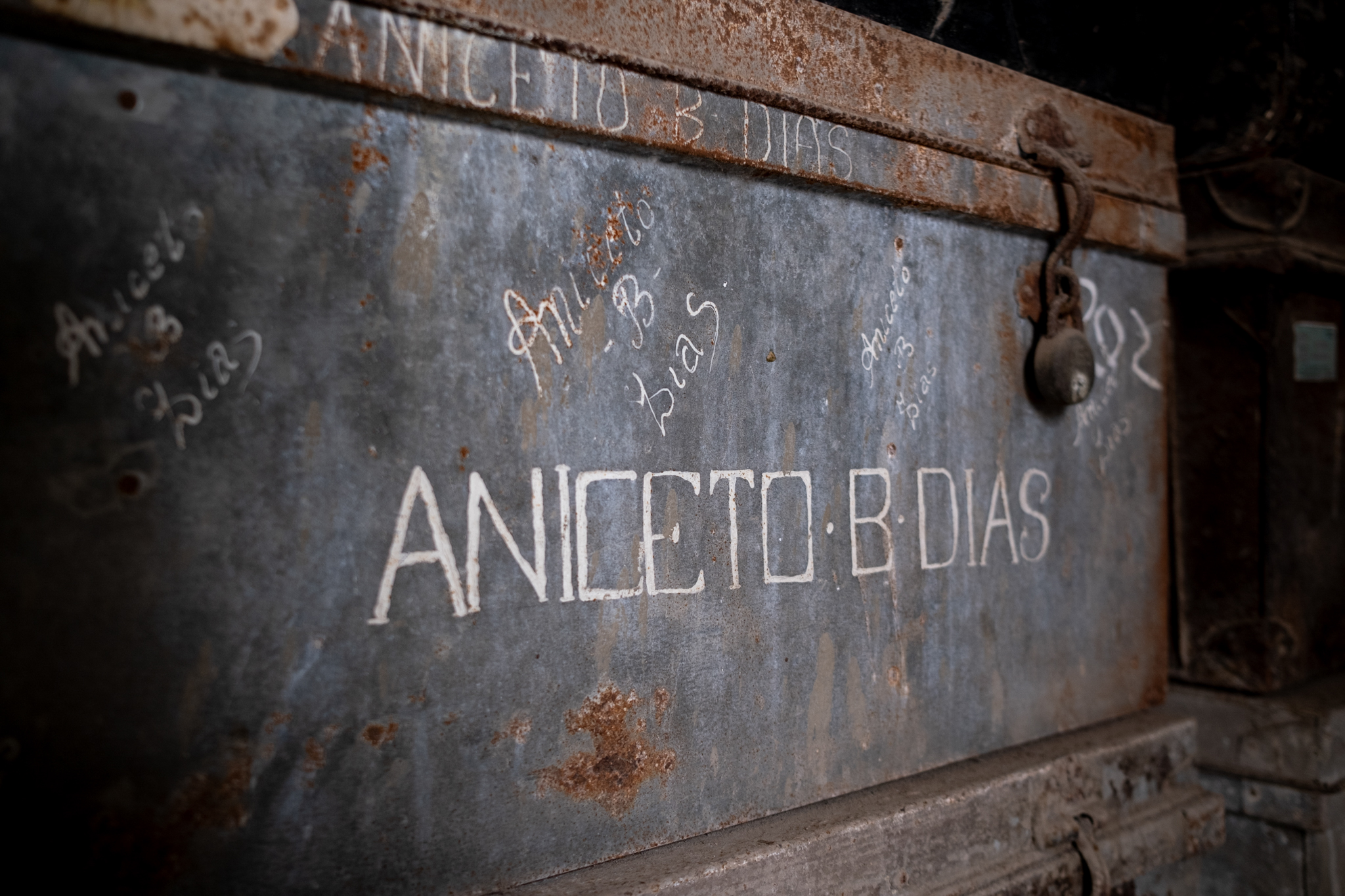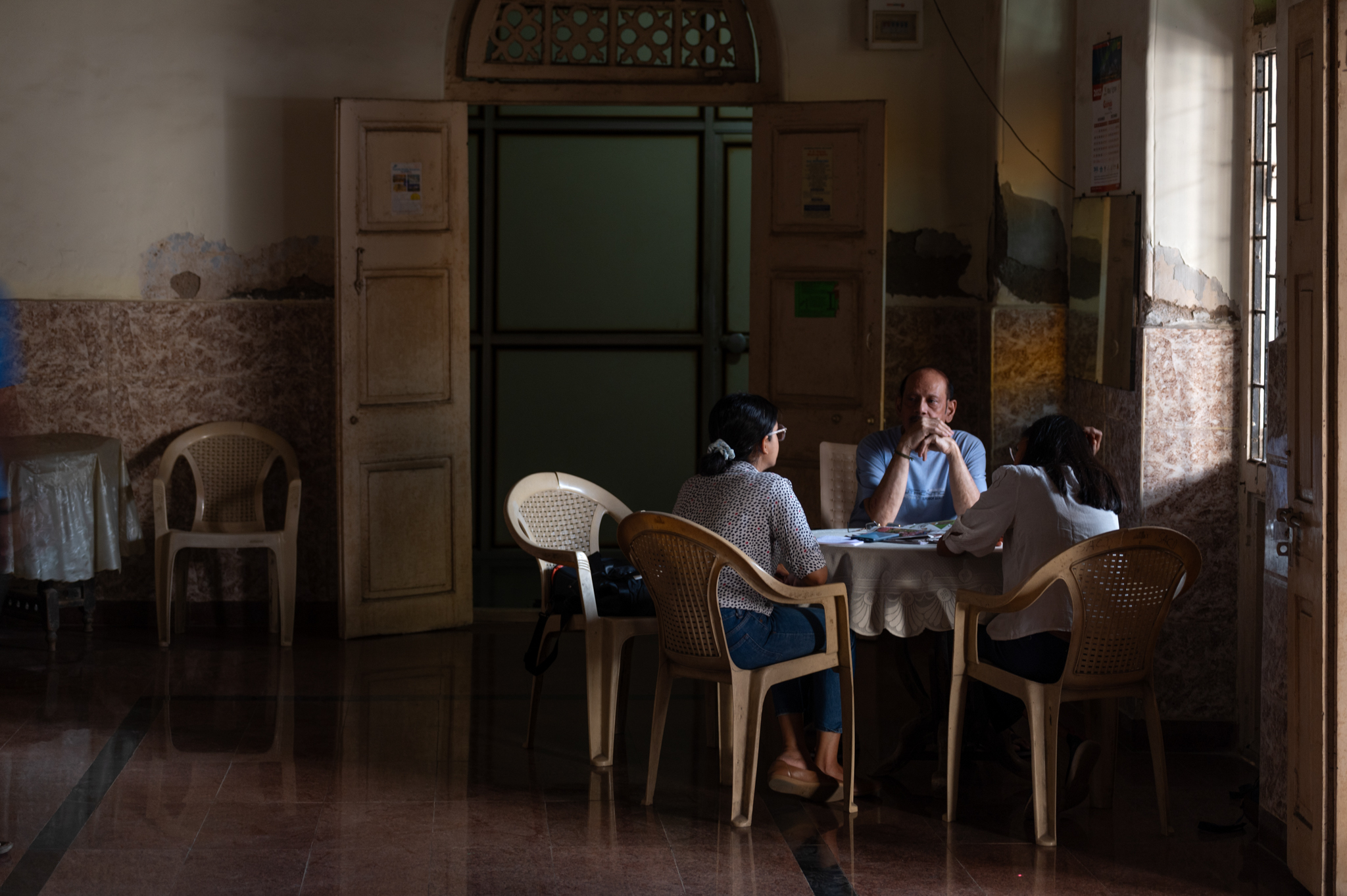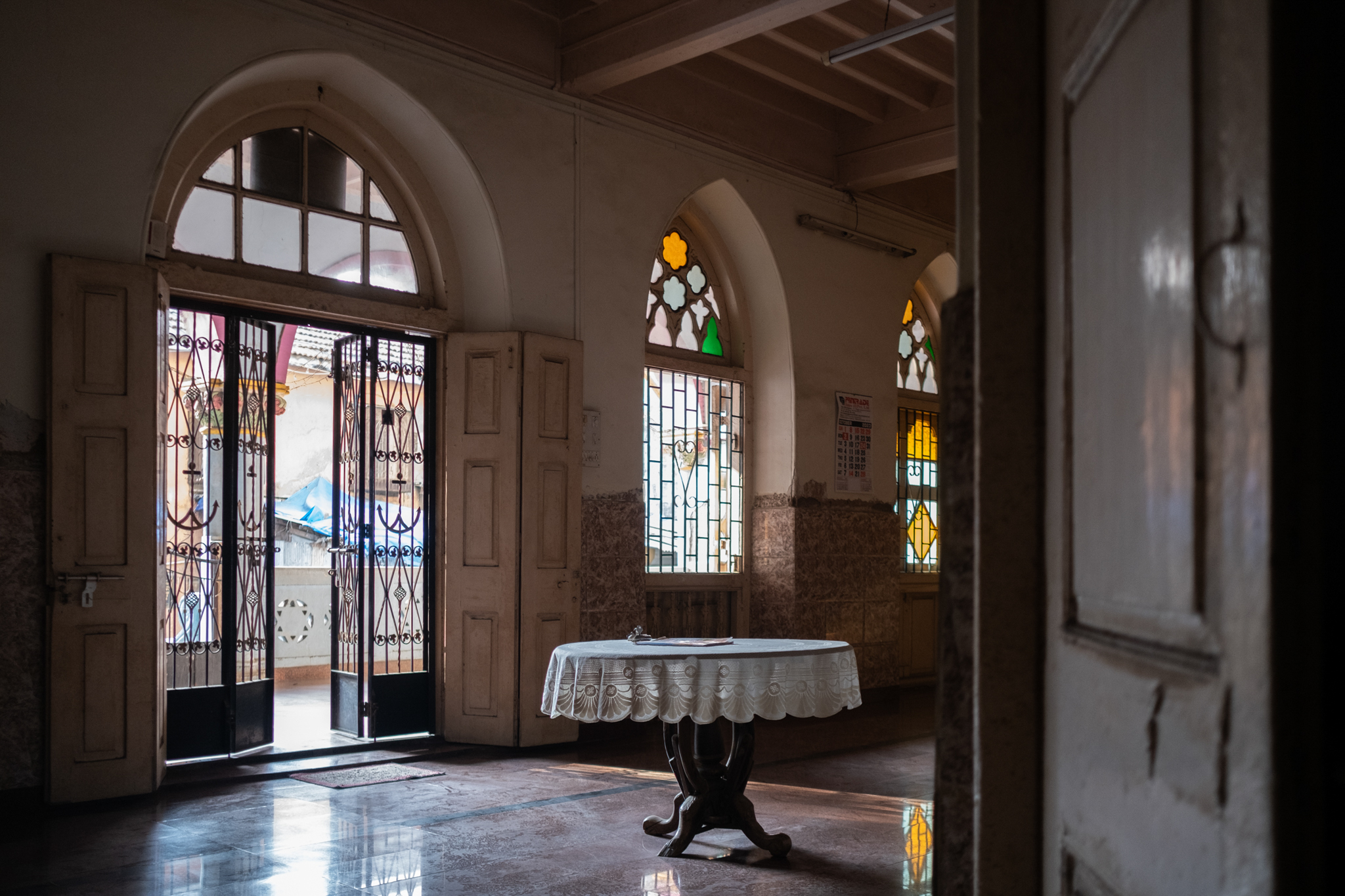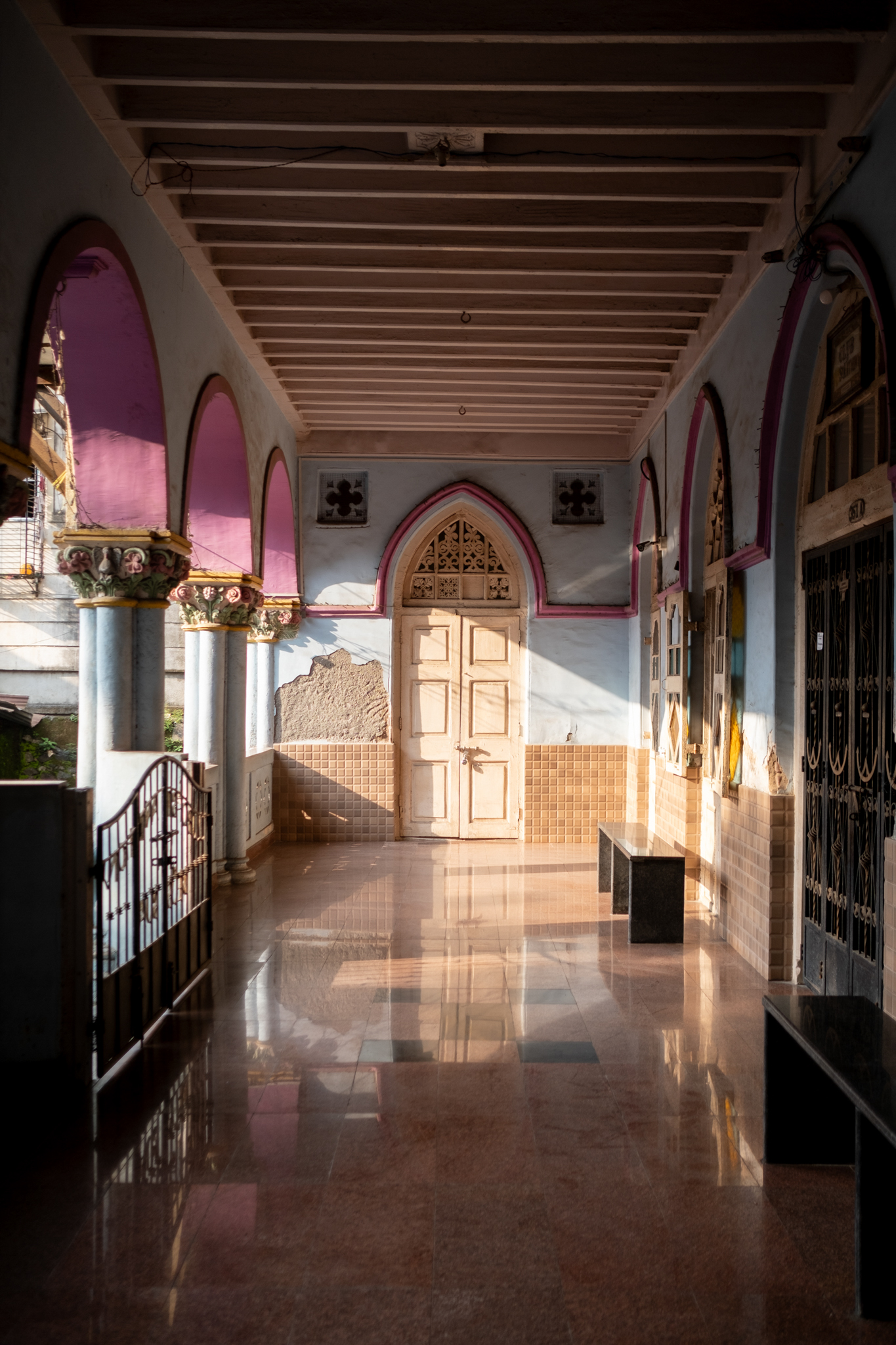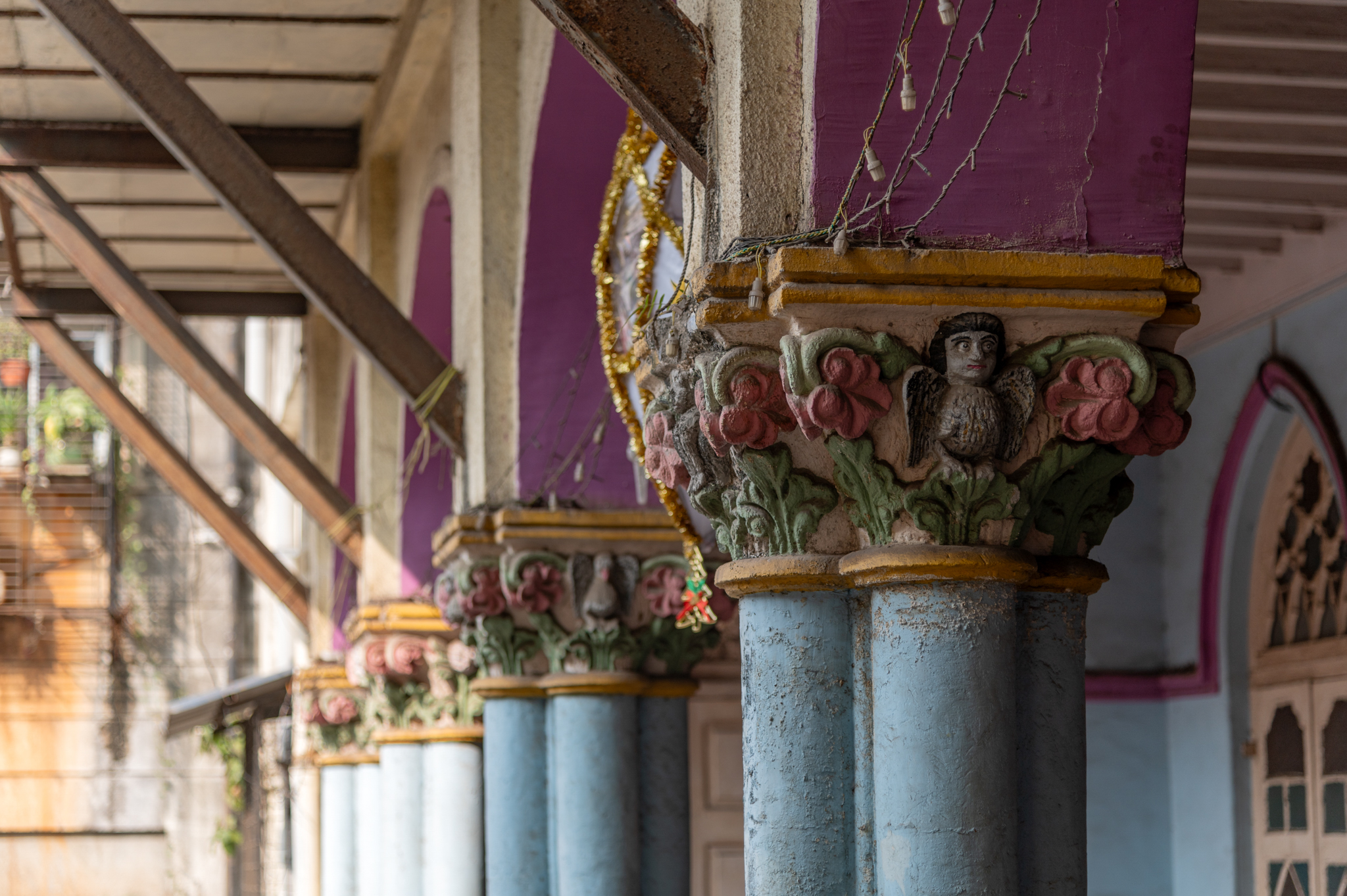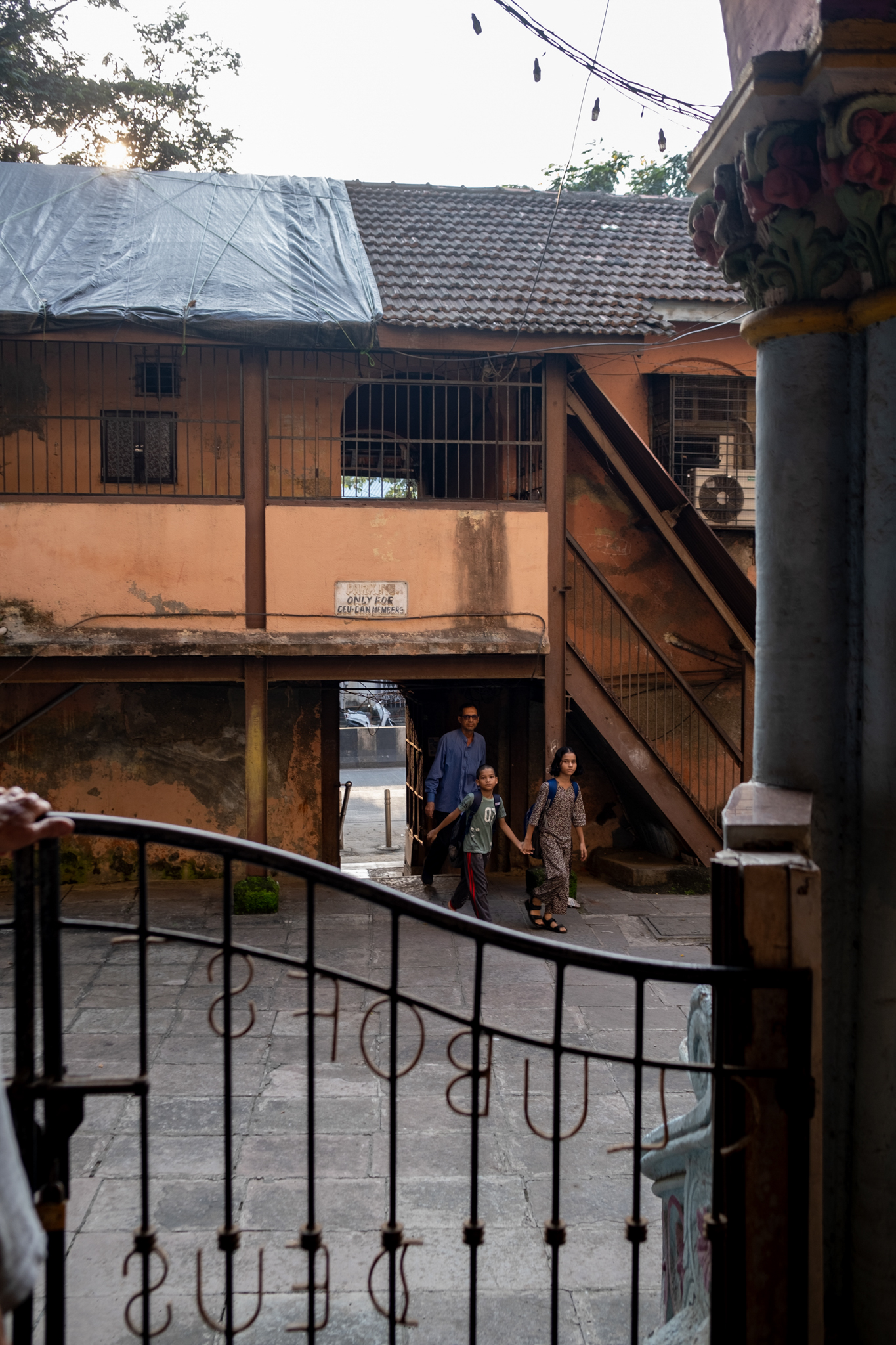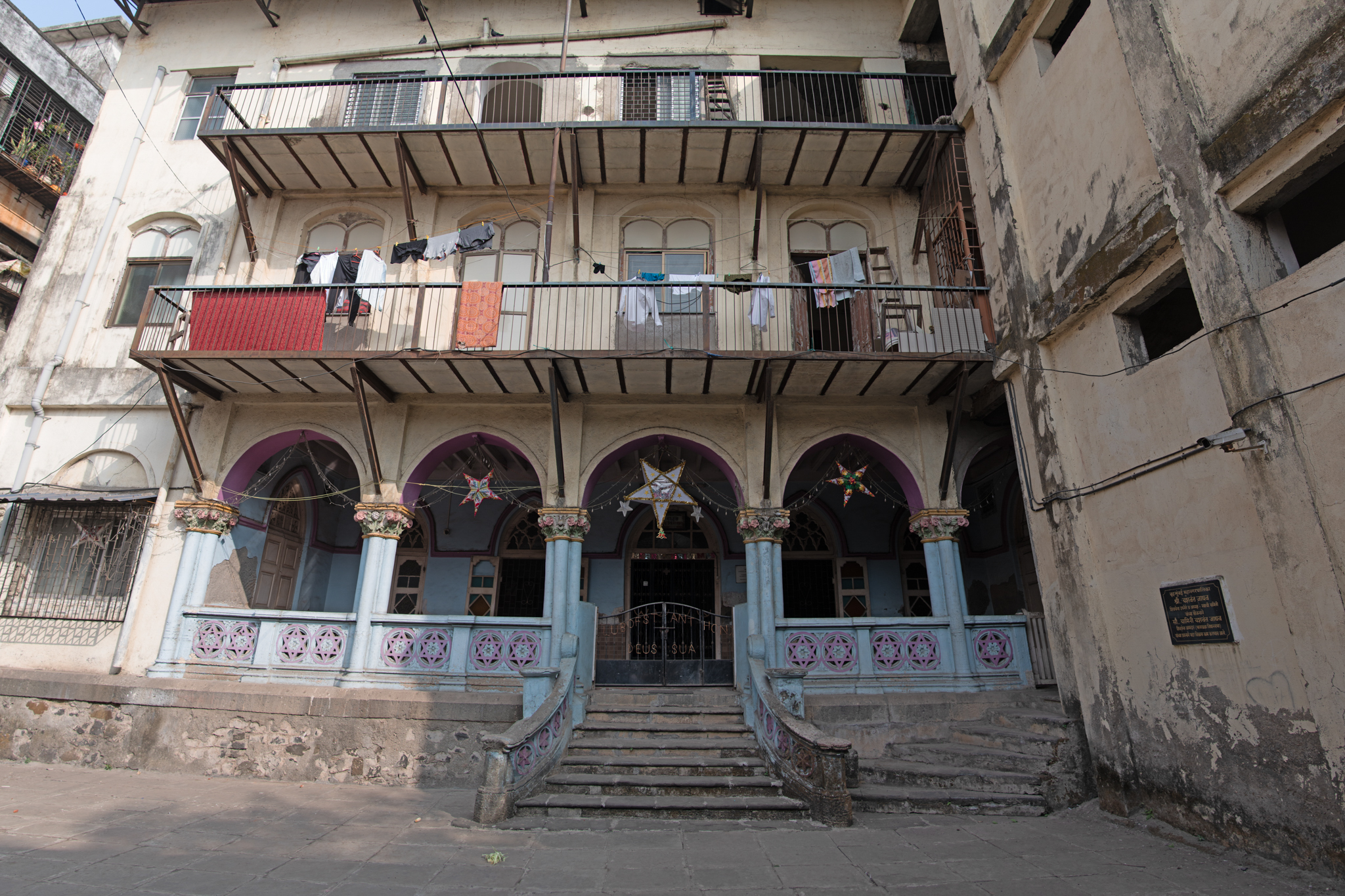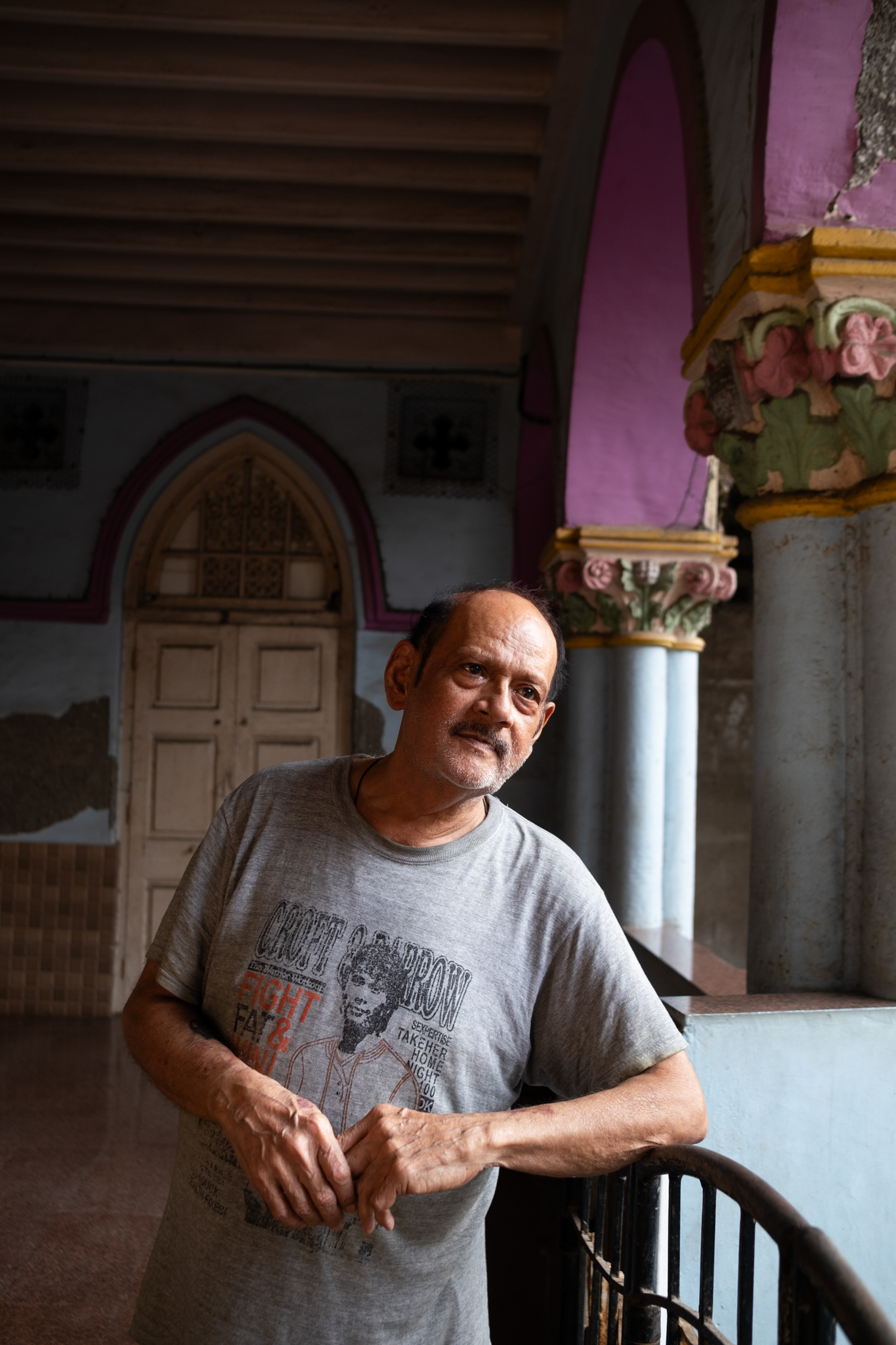The Club of St. Anthony: A Goan Kudd in Mazagaon
European colonisation of India began when Portuguese explorer Vasco da Gama rounded the Cape of Good Hope and landed in Calicut (Kozhikode) in 1498. In 1510, Afonso de Albuquerque led a military expedition to Goa, capturing the city from the Bijapur Sultanate. The Portuguese continued to expand their influence along the western coast of India, establishing control over Daman and Diu. The capture of Goa was significant because it provided the Portuguese Empire with a strategic base for their naval and trade activities in the Indian Ocean, overseen by a Goa viceroy. They were the first European power to arrive in India and the last to depart, forced out through a military operation (Operation Vijay) in December 1961.
Outward migration
Goa had a distinct political and administrative system where power and resources were concentrated in the hands of the ruling elite, primarily the Portuguese nobility. There were high levels of class and social inequality between the ruling elite and ordinary people. For the less privileged, opportunities to move up the economic and social ladder were scarce. Migration to Mumbai was a natural choice for those looking for better jobs, trade opportunities, and business ventures. Not only was Mumbai the financial hub of India and a strategic port, but it also had a sizeable Catholic community that had resided there for centuries. There were specific requirements for travel between Goa and the rest of India. Till 1961, Goans needed a permit to work in India and a passport to leave Portuguese India. Despite the travel regulations, thousands of Goans migrated to Mumbai, where they worked, and established their own distinct institutions and neighbourhoods. The Goan diaspora in Mumbai remains a vibrant and dynamic community that has played an integral role in the city's cultural, social, religious, and economic life.
Goans in Mumbai
In Mumbai, Goan migrants found jobs, depending on their education levels, interests, and skills. The Mazagaon dockyards recruited many Goan migrants as sailors, dock labourers, or stevedores. Music was always an important part of Goan culture, and Goans were skilled at playing Western musical instruments. They worked as instrumentalists in bands and orchestras, or in the film and music industries. They were also renowned for their culinary skills; they worked as chefs and cooks in hotels and restaurants, with some establishing cafes and bakeries. Educated Goans worked as clerks in the textile mills, clergy in churches, or teachers in educational institutions, where their English-speaking skills gave them an advantage over locals. Goan sportsmen played in the various gymkhanas and sporting clubs, particularly football, which holds a special place in Goan culture.
Goan associations and clubs
The village community in Mumbai, through a network of family and friends, provided a support system for Goans. The East Indian community, a group of fellow Catholics converted during Portuguese rule, served as another source of support. Goans and East Indians shared cultural similarities, often living in the same neighborhoods and intermarried. Newly arrived migrants received financial support and accommodation through associations and clubs established by their places of origin. Typically, a Goan village provided patronage and membership to such clubs, overseeing their maintenance. Goans established these clubs, known as kudd (alternately cudd), as social clubs to socialise, celebrate festivals, and maintain their cultural identity while living away from their native land and families.
St. Anthony of Padua
The Club of St. Anthony of Deussua is located at 351A PD’Mello Road, Mazagaon. The club was founded in 1880 and associated with the village of Deussua in Chinchinim, South Goa district, with St. Anthony serving as its patron saint. St. Anthony, a Catholic priest born in Lisbon, Portugal, in 1195, held great veneration in Portugal and the former colonies of the Portuguese Empire. People especially invoke him as the patron saint for the recovery of lost items, making him a fitting choice for the club where people often leave their luggage. A small chapel dedicated to the saint is housed inside the club, typical of chapels found inside Goan homes. His feast day is observed each year on June 13th.
Architectural details
In 2013, Antonio Barretto took up residence in the kudd and managed the day-to-day affairs. Barretto has been a club member since 1973, and he has a longstanding connection to the establishment. According to Barretto, the previous owners of the building were Iranians. Despite the lack of reliable evidence regarding the kudd's construction year, it is undeniably over a century old. Architectural details, such as lancet windows with wooden tracery, Corinthian pillar capitals featuring mythical beasts, a sloping roof with tiles, upper balconies supported on wooden brackets, antique wooden furniture, and wooden flooring, provide an estimate of its vintage. The spacious interiors, along with high doors and windows allowing natural daylight to enter the living areas, are typical of buildings constructed during the last quarter of the 19th century.
The Star of David
As one views the facade from the front courtyard, the six-pointed Star of David on the balustrades of the staircase and porch stands out as a prominent symbol. The Star of David, emblematic of the Jewish faith and now featured on the modern flag of Israel, suggests a historical connection with the Baghdadi Jews living in Mazagaon. Originally, the term ‘Baghdadi’ in India referred to Jews from the area between the Tigris and Euphrates Rivers in modern-day Iraq. However, it later encompassed Jews fleeing persecution from Syria and other parts of the Ottoman Empire (and Aden in Yemen), who were Arabic-speaking, as well as Jews who arrived from Persia (Iran) and Afghanistan. Mumbai’s most influential Baghdadi Jew, Sir David Sassoon, resided in a palatial mansion in neighbouring Byculla and founded many charitable, educational, and religious institutions in the area.
Life at the kudd
The St. Anthony Club allows long-term stays for its members at a nominal cost. The duration of a guest's stay depends on the nature of their work. Unlike hotels, guests can leave their belongings in a trunk with their names written on it. Guests can access these locked, stacked, and stored trunks at no additional cost upon their return. This kind of arrangement suits the itinerant lifestyle of sailors, who visit Mumbai sporadically. Those who interview for jobs or appear for exams stay for long periods of time, often several months. The club has transitioned from hosting only men to accommodating families and community members. However, the club still maintains low accommodations and upholds a 'do not disturb' policy.
Tourism boom in Goa
Following Goa's merger with India, Goan society underwent significant changes. Goans who could prove their Portuguese ancestry were given the option to migrate to Portugal and obtain Portuguese citizenship. This resulted in a mass exodus of Goans who settled in Portugal and other Portuguese colonies. As travel within India became easier, Goans diversified their migration to other parts of the country and abroad. These factors not only changed the state's demography, but also impacted its economic development. In the 1970s, Goa became a popular destination for hippies, drawn to its idyllic lifestyle and sandy beaches. From the 1980s on, Goa emerged as a highly sought-after tourism destination for domestic and international travelers. Thanks to the tourism boom, Goa (according to NSDP per capita figures in 2021-22) now has the highest GDP per capita among all Indian states, two and a half times as high as the GDP per capita of the country as a whole.
Decline in outward migration
While economic prosperity has generated jobs and revenue for the state, it has also caused a decline in outward migration from Goa. The clubs that once catered to Goan migrants have either shut down or fallen into disrepair, facing challenges due to low occupancy and a lack of patronage. The Club of St. Anthony is among the handful of clubs still operational. Barretto’s friend, Rafique Baghdadi, a film historian and journalist, occasionally leads heritage enthusiasts to the site during walks in Mazagaon. This has given the kudd some media attention and raised awareness of its historical significance. However, further community involvement is necessary to ensure the preservation of this century-old institution for its historical value to the Goan diaspora.
The Club of St. Anthony Deussua is located at 351A PD’Mello Road, Mazagaon. The building is not visible from the road, except for the uppermost floor. A narrow entrance between shops facing PD'Mello Road leads to the building. The road is named after Placid D'Mello (1919–1958), a trade union leader and founder of the All India Port and Dock Workers Federation.
Kudd is a dormitory-style club that provides affordable accommodation to Goan residents living and working in Mumbai. From 1960, after the integration of Goa with India, outward migration from Goa has considerably declined. Kudds' operations were impacted by dwindling occupancy. Many kudds closed or were repurposed. Among the handful of operational kudds is the Club of St. Anthony in Mazagaon.
The Club of St. Anthony is located close to Dockyard railway station on the Harbour Line, making it a convenient place to stay for those travelling by train. Kudds are associated with their place of origin, typically a Goan village, which provides patronage and membership to the club. Visitors from Deussua village, Chinchinim, established the Club of St. Anthony.
The wrought iron gates, adorned with large metal letters spelling out Deussua and the Club of St. Anthony, clearly indicate the club's affiliation with Deussua village in the South Goa district.
Currently, the Club of St. Anthony has around 4,000 members. Old photos and trophies displayed in cabinets preserve the glory days of the club. Kudds have strong ties with football, the most popular sport in Goa. After winning a football tournament, the sports club of St. Anthony captured this photo in a Mumbai studio.
The St. Anthony of Deussua Club is over 140 years old. It was established in 1880. In 1980, the club celebrated its centenary year under the ownership and management of the Catholic community in Deussua. The reception hall displays some photographs from the centennial event.
The club bears the name of St. Anthony, the patron saint of Deussua, on the altar. The Latin phrase praebe filii cor tumm written on the shrine with portraits of Jesus and Mary (on the left) means ‘My Son, give me thy heart.’ The phrase domus mea doums orationis on the central arch means ‘My house is a house of prayer.’ The phrase petite et acepietis on the arch with a portrait of the Madonna and child (on the right) means ‘ask and you shall receive.’ Christmas lights illuminate the altar.
The chapel wall at the Basilica of Bom Jesus at Velha Goa displays a small figure of St. Anthony and a photograph of the incorruptible body of St. Francis Xavier. Portugal and the Portuguese Empire's colonies venerated St. Anthony, the patron saint of Padua. St. Francis Xavier, though born in Xavier, Spain, became a Catholic missionary working for the Portuguese Empire, spreading Catholicism in India, Malacca, China, and Japan. Catholics in Goa, which was part of the former Portuguese Empire for 450 years, venerate both as saints.
Family members typically designate a chapel for use in Goan homes, similar to the chapel at the Club of St. Anthony. The chapel offers a shared space for prayer, reflection, and gathering during festivals. Spaces like these emphasise the importance of Goan identity, religious traditions, and the sense of community that defines the unique character of the clubs.
A garlanded portrait of Jesus greets visitors in the reception hall. The Latin phrase adveniat regnum tumm, written on the scroll above, translates as ‘May your kingdom come.’ This particular phrase is associated with Christ the King, referring to the idea of the Kingdom of God, where Christ is described as being seated at the right hand of God. In front of the portrait is a small figure of Mother Mary holding the infant Jesus.
Over time, the celebrations at the Club of St. Anthony have become muted. During Christmas, the manager, Antonio Barretto, makes arrangements for decorating the club with lights. He installed a Christmas tree with the Star of Bethlehem in the reception hall in 2023, as well as a miniature representation of the nativity scene (the birth of Jesus in a manger).
In Konkani, the native language of Goans, the word kudd translates to room. The Club of St. Anthony offers eight dormitories, six family rooms, three toilets, three common bathrooms, and a community kitchen. The Kudds, once exclusively catering to young men, have adapted to changing times. Nowadays, they are open to all, including women and families.
Goans emigrated to Mumbai in search of better trade, education, and employment opportunities. Erivan Velho, a 26-year-old from Deussua village, is staying at the club where he is studying for his exams. The kudd provides students like Erivan with a quiet place to stay and study away from the city's hustle and bustle.
Accommodation at the club is cheap but basic. The dormitory provides guests with a single bed. Dormitories are exclusively for club members. Every guest is expected to maintain decorum and discipline and not create nuisances for others.
During the colonial period, Goan migrants worked as pantry boys, dhobis, bakers, tailors, shoemakers, musicians, clerks, and other sundry jobs at Mazagaon. Some found employment in factories, hotels, offices, railways, and mills that dotted Mazagaon and Byculla. Many worked as sailors on ships that had to transit through the dockyards. Due to their itinerant lifestyle, they would leave their personal belongings at the kudd, locked away in trunks.
Kudds offers storage for left-over luggage at no extra cost. Kudds neatly stacks the trunks on top of each other along the wall to save floor space. Nowadays, with dwindling occupancy, more trunks vie for space in the corridors than actual guests staying there.
Each guest is allowed one trunk for storage, which contains their personal belongings. The trunks are labelled with family names or membership numbers for identification.
The reception hall is used as a community space and for meeting outside visitors. The club celebrated the feast day of St. Anthony, which falls on June 13th each year, with dance balls in the hall and dinners, up until the early 2000s. Nowadays, it is a much quieter place, occasionally used by visitors for watching TV.
The Club of St. Anthony has trappings of a space from another era, caught in a time-wrap. The reception hall's ceiling features a curiously anachronistic bell pull. If a visitor finds the gate locked from inside, they can pull the bell from the outside to alert the manager. There is no electric calling bell.
The wide entrance and tall windows along the reception hall keep the interiors breezy and well-ventilated. Sunlight naturally illuminates the reception hall, the largest room in the club, during the day. The building is west-facing, and light streaming in the late afternoon casts long shadows in the reception hall.
Gothic architecture underwent a revival in the late 19th century and became very popular in Mumbai thanks to the works of architects such as Frederick Stevens. Architects such as Frederick Stevens likely built the club building in or around the same period, incorporating certain Gothic revival elements. For example, a distinctive feature of neo-Gothic architecture is the use of stained glass windows, which cast colorful light on the building's interior.
After decades of neglect, the building underwent a facelift, thanks to a collective effort by community members of Deussua. The century-old building underwent some material and structural changes during the restoration. The original wooden flooring was replaced by marble flooring, and metal grilles were added to the windows. Even after restoration, there is an overall sense of dilapidation and aging, as evidenced by the peeled plaster on the veranda's walls.
The lancet doors and windows have a distinctive pointed arch at the top. The windows feature fine tracery. A stone framework (wooden in this case) divides the upper part of Gothic windows (or screens, panels, and vaults) into sections of various proportions, using tracery as a decorative element.
The fluted Corinthian pillars feature elaborate mouldings of stylized acanthus leaves and floral scrolls on their capitals. Some real and some imaginary birds and beasts are hidden in the flora. For example, the pillar capital in the foreground (on the right) has a hybrid creature with a human head and the body of a bird, similar to the sphinx from Greek mythology.
The board above the entrance reserves the open space in front of the club for parking vehicles. Long-term tenants occupy the quarters above the entrance.
Five semi-circular arches divide the front veranda. Corinthian pillars support the brackets on the first-floor balcony. Over the years, the building has undergone many structural changes. For instance, the addition of the second floor, which was not originally part of the building, occurred later. Later additions also included the building on the right, which features a staircase that leads directly to the first and second floors. This new building has partially obstructed the older building's façade.
A short flight of steps connects the courtyard (now used for parking vehicles) to the front veranda. The balusters along the handrails feature the Star of David (a six-pointed star recognized as a symbol of Judaism) motif, which also appears on the veranda parapet. On either side of the staircase are squat pedestals, which may have supported statues or planters. The helical steps in the foreground lead to a side gate on the veranda.
On the veranda parapet, the Star of David appears in pairs of two. The central part of the hexagram features a flower motif. The sets are separated by balusters. The presence of this Jewish symbol may be associated with the previous owners of the building, who could have been Baghdadi Jews, who had a sizable population living in Mazagaon in the 19th century but have since migrated to other countries.
Rafique Baghdadi is a long-time Mazagaon resident and an expert on the culture and heritage of his neighborhood. He is a veteran film journalist by profession, and he frequently visits the kudd with fellow heritage enthusiasts to give them an introduction to Mazagaon's multicultural history.
Antonio Barretto is the current manager of the St. Anthony Club. He has been a club member since 1973, and he has a longstanding connection to the place. He took up residence in the kudd in 2013, and now manages its day-to-day affairs, keeping it operational.

